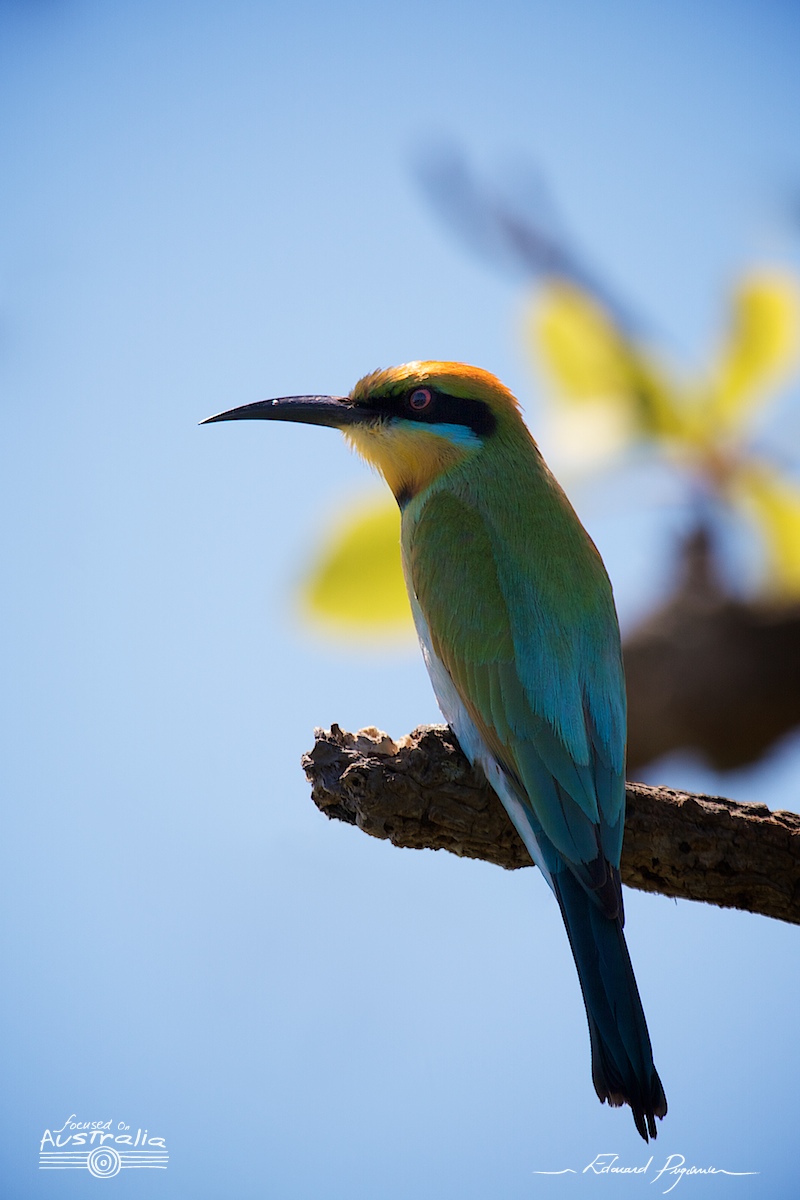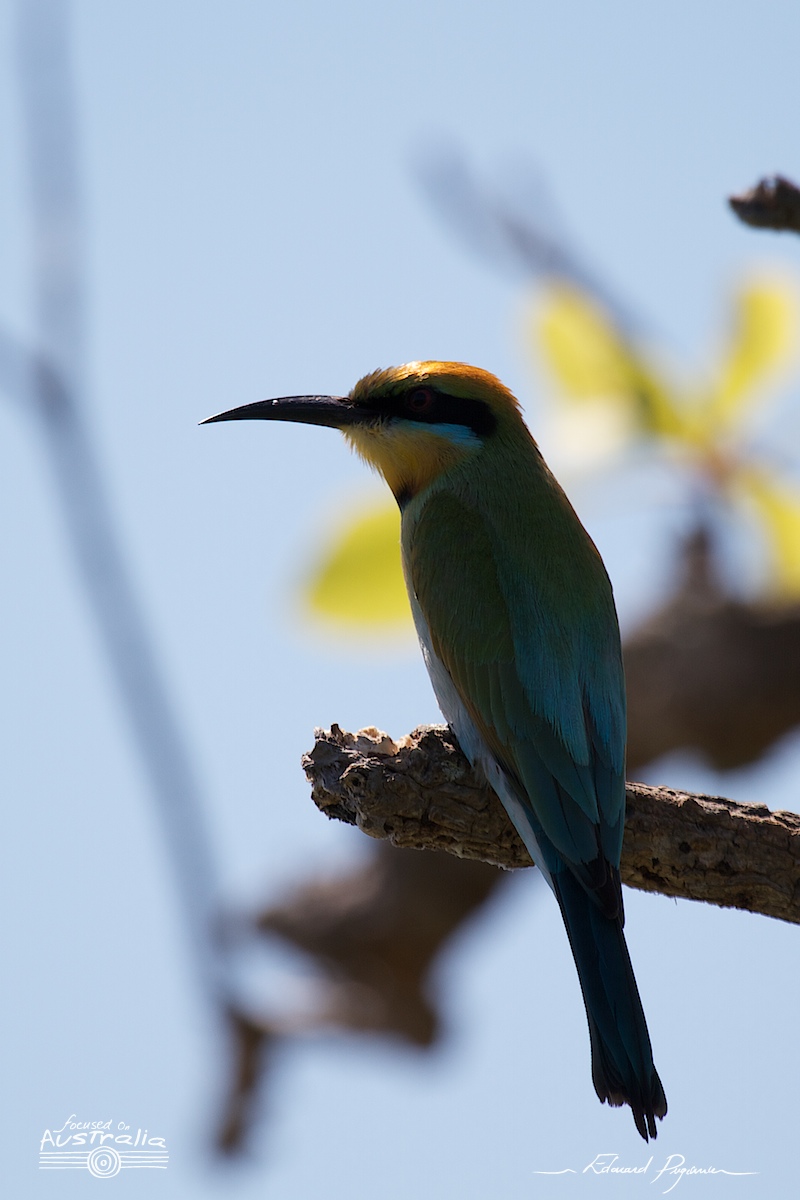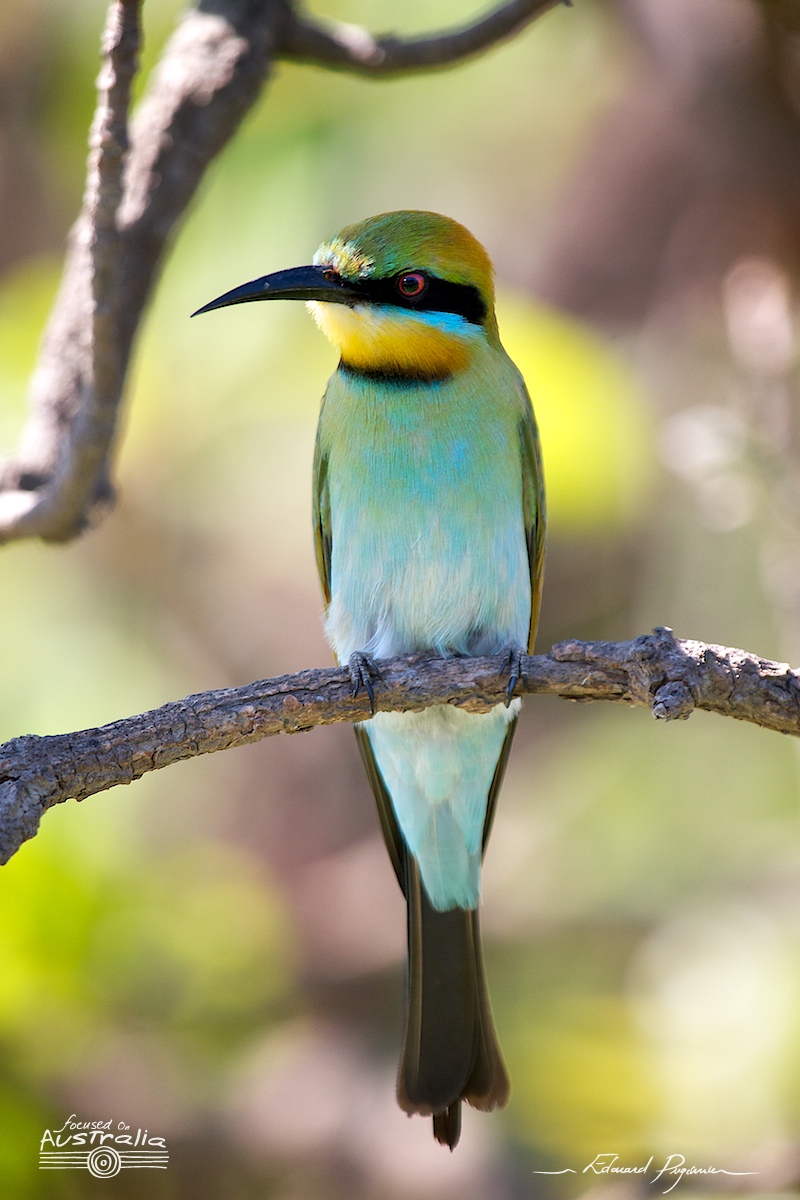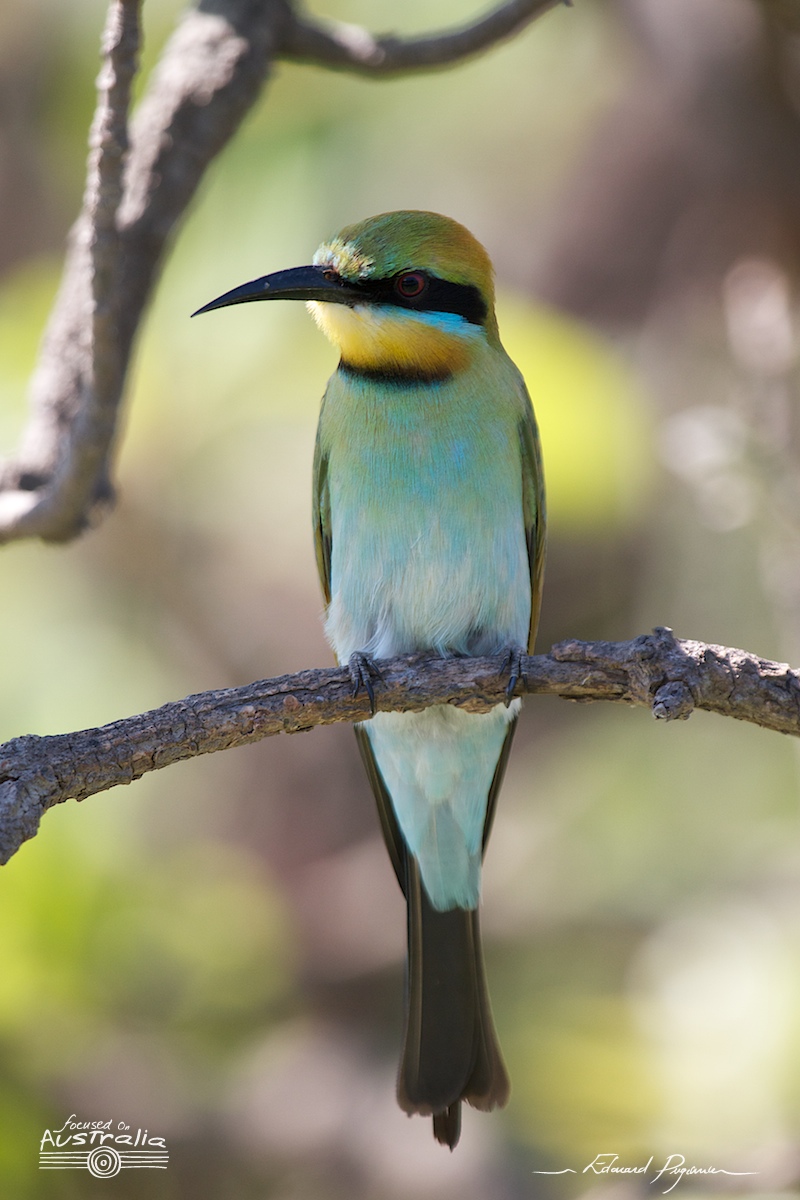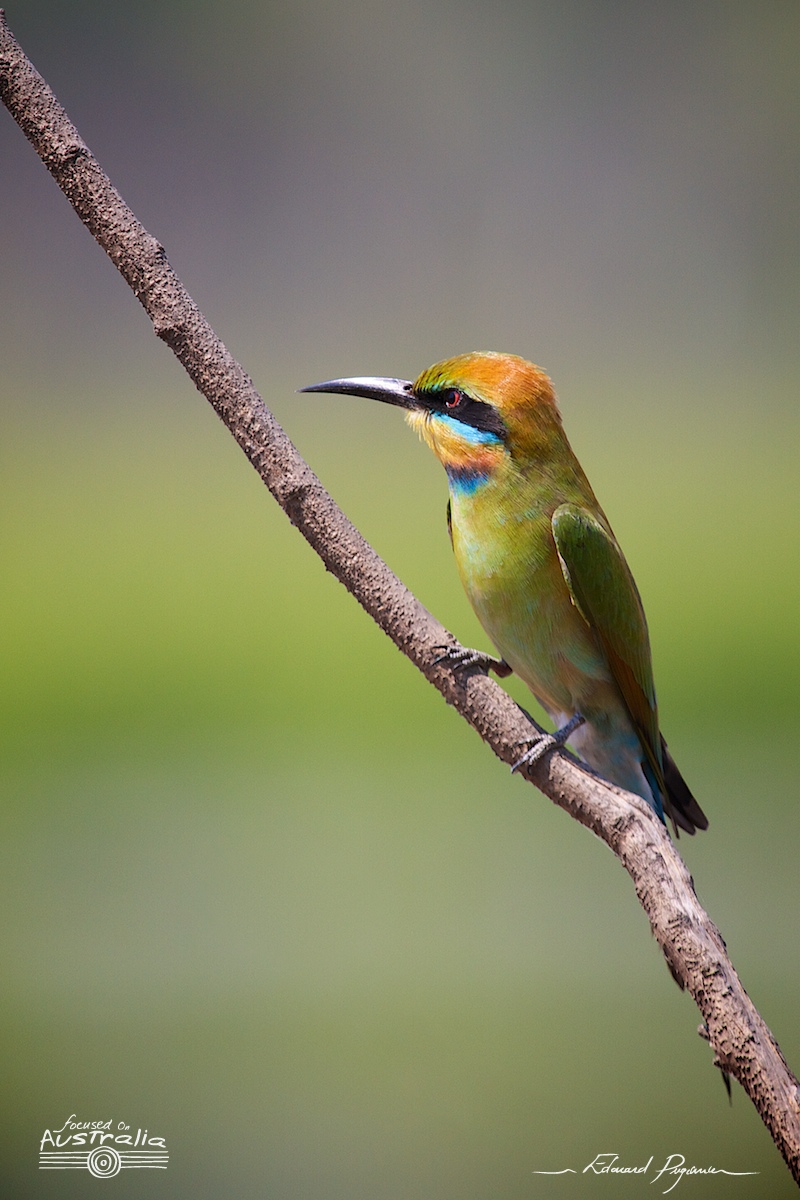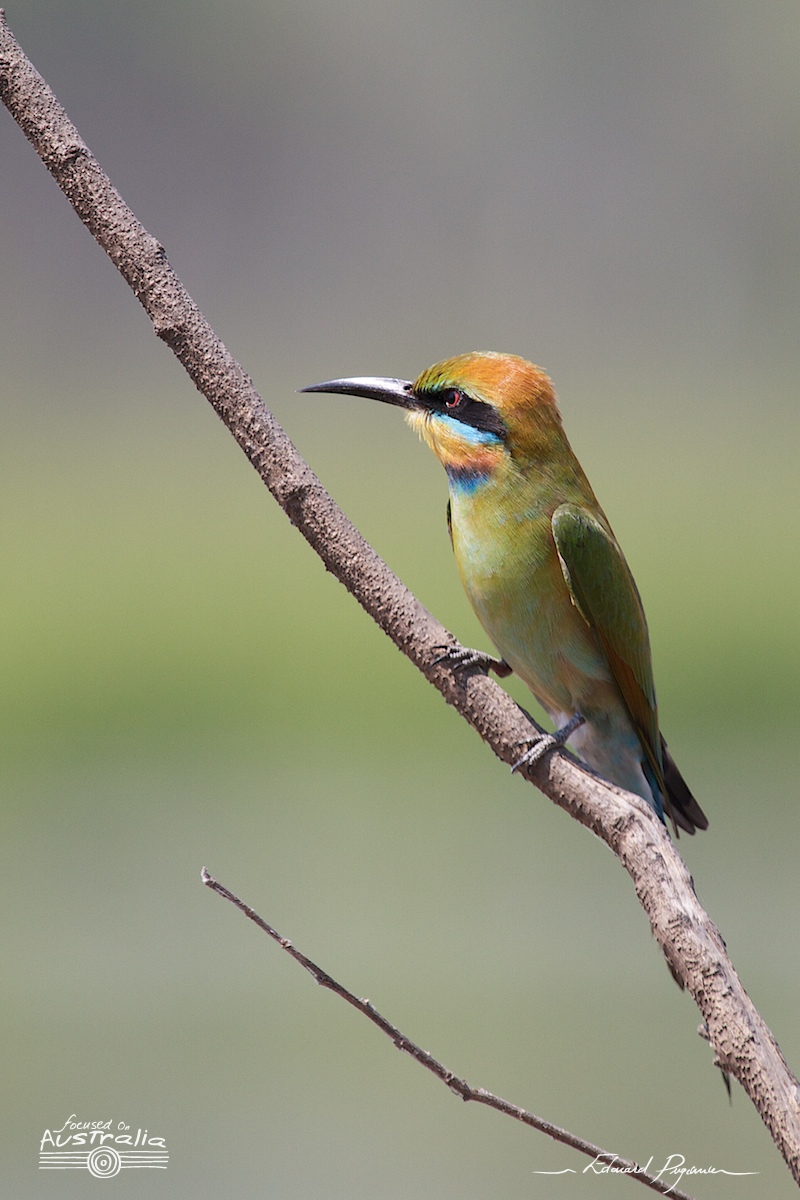Rainbow bee-eaters are brilliantly colored birds that grow to be 19–24 cm (max 28 cm) in length, including the elongated tail feathers. The upper back and wings are green in color, and the lower back and under-tail coverts are bright blue. The undersides of the wings and primary flight feathers are red and tipped with black, and the tail is black to deep violet. The rainbow bee-eater's two central tail feathers are longer than the other tail feathers, and are longer in the male rainbow bee-eaters than in the females. The crown of the head, the stomach and breast, and the throat are pale yellowish in color, and the rainbow bee-eater has a black bib and a black stripe through its red eye.
Rainbow bee-eaters are a common species and can be found during the summer in forested areas in most of southern Australia excluding Tasmania. They migrate north during the winter into northern Australia, New Guinea, and some of the southern islands of Indonesia. They may be found in open woodlands, beaches, dunes, cliffs, mangroves, woodlands and they often visits parks and private gardens.
Like all bee-eaters, rainbow bee-eaters are very social birds. When they are not breeding they roost together in large groups in dense undergrowth or large trees.
